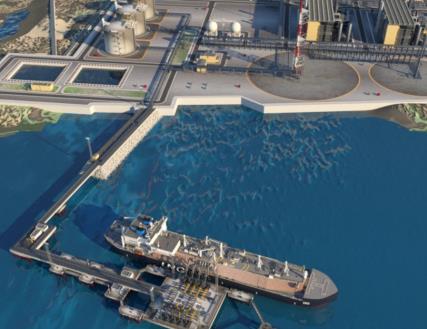Published: Friday, 21 January 2022 at 4:17:38 AM
Over the last two days, Mid West Ports Authority (MWPA) has been undertaking 3D modelling of the port and port lands with a fixed wing drone, primarily to better understand how wind moves across and through the port better.
LiDAR 3D modelling of the port will allow an accurate assessment of how wind currently moves through port structures, identify opportunities to reduce its impact on surrounding operations and where wind reducing structures and initiatives are proposed, model this change for effectiveness prior to installation.
Operating in a high wind climate, MWPA is conscious of the impact emissions can have on surrounding business and the community.
Acting CEO, Damian Tully said “wind is an ongoing challenge for the port. The port and its customers move millions of tonnes of product every year, with most product being handled multiple times. Each time product is moved, we must consider many things including transfer points, stockpiling and ship loading.
“We already have numerous mitigation strategies in place in consideration of the windy environment, including being one of the few ports in Australia which requires (all but one) stockpiles to be housed within pressurised sheds and loaded via covered conveyor belts.
“As always, there is continually more that can be done, which is why we are now taking steps to get an in detail understanding of wind movement through the port and what opportunities there are to reduce its impacts”, he said.
LiDAR (light detection and ranging), is a remote sensing method which uses an array of laser lights, and measures the time of reflection to study the Earth’s parameters such as infrastructure or topographical and geographical features.
It is used extensively in the oil and gas, mining and construction industries to measure distance or ranges for conducting geological or seismological surveys. MWPA will share some 3D imaging on its Facebook page once available.
Some examples of 3D modelling follow:


Back to News